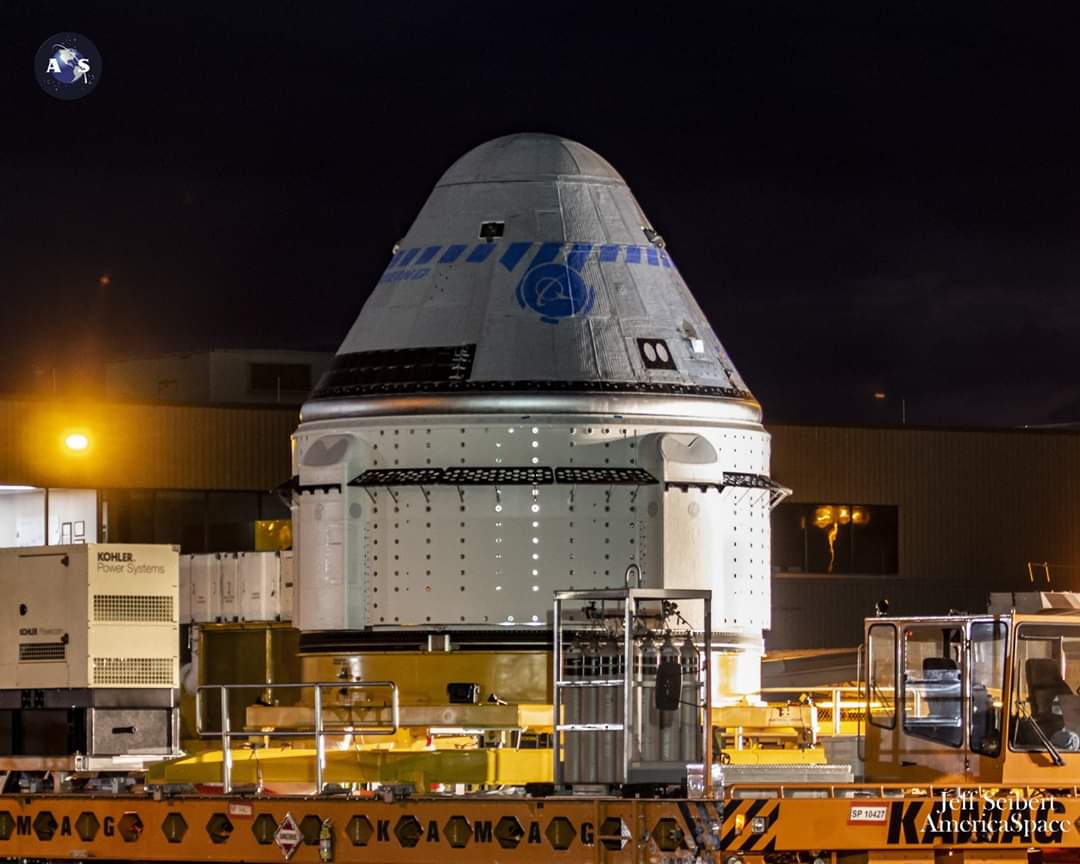
Early Wednesday (Nov 21), Boeing rolled out their first CST-100 Starliner crew capsule for space, departing a former space shuttle processing hangar at Kennedy Space Center in the middle of the night for transport to neighboring Space Launch Complex 41 at Cape Canaveral Air Force Station, where the spacecraft’s rocket was waiting.
It marked another big milestone on the road to returning Americans to space again from U.S. soil, a capability given up in 2011 when NASA was forced to retire the space shuttle fleet of Discovery, Atlantis and Endeavour.
Now, the countdown clock is ticking towards a launch attempt on the morning of Dec 17 to send Starliner sailing atop a United Launch Alliance (ULA) Atlas-V rocket on Boeing’s critical un-crewed Orbital Flight Test, which is required under their multi-billion dollar Commercial Crew contract with NASA.
Coming on the heels of a successful milestone Pad Abort Test, the upcoming OFT will put the spacecraft through its paces to and from the International Space Station, same as what SpaceX did earlier this year with Crew Dragon on Demo-1, in order to provide valuable data on the end-to-end performance of the rocket, Starliner and ground systems, as well as in-orbit, docking and landing operations, before NASA will certify Starliner and board their first astronauts in 2020.

Riding atop ULA’s motorized payload transporter at a blazing speed of 5mph, Starliner arrived at the doors of the rocket’s 30-story tall Vertical Integration Facility (VIF) early Wed, before being secured with a four-point lifting sling (called a Handling Fixture Hoist Tool), then being hoisted with a crane to be placed atop the Atlas-V rocket.
“Accommodations for Starliner in the VIF include a Class 100,000 clean enclosure to enter the capsule’s crew module through the hatchway, access stands for technicians to detach the lift sling and complete preflight work to the craft’s exterior, power and data transmission umbilicals, plus purge and cooling lines,” noted ULA on its blog.
Looking ahead, ULA will now conduct an Integrated Systems Test, a tip-to-tail electrical check of the rocket and Starliner stack to verify all elements are communicating properly.

Following that, ULA will soon roll out the fully-assembled, 172-foot-tall Atlas-V with Starliner to the nearby launch pad for an Integrated Day-of-Launch Test (IDOLT), also known as a Wet Dress Rehearsal (WDR), where launch teams will fuel the rocket stages and go through the launch countdown same as launch day, without actually igniting the engines.
.
BOOKMARK our Starliner Launch Tracker for updates and LIVE COVERAGE on launch day
.
.
FOLLOW AmericaSpace on Facebook and Twitter!
.
.





